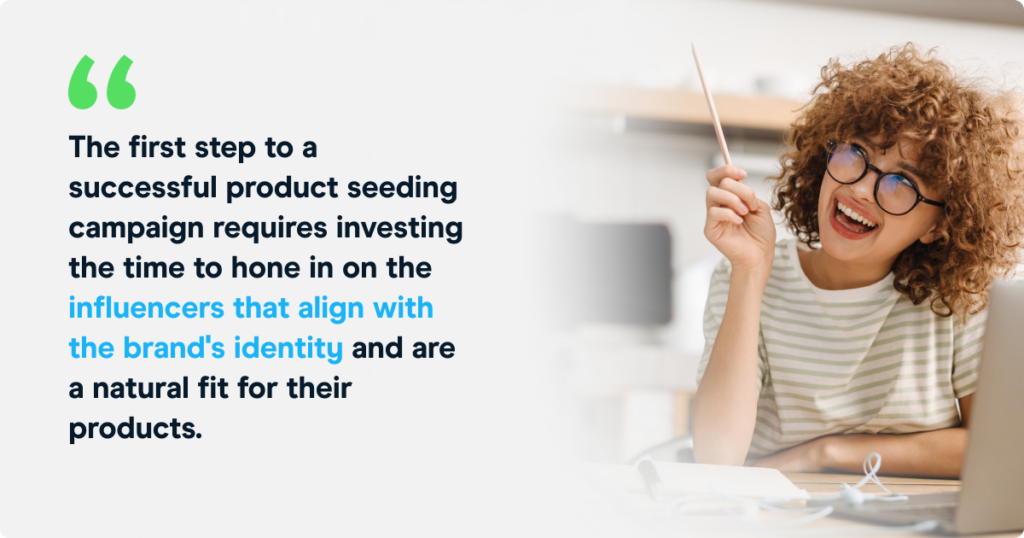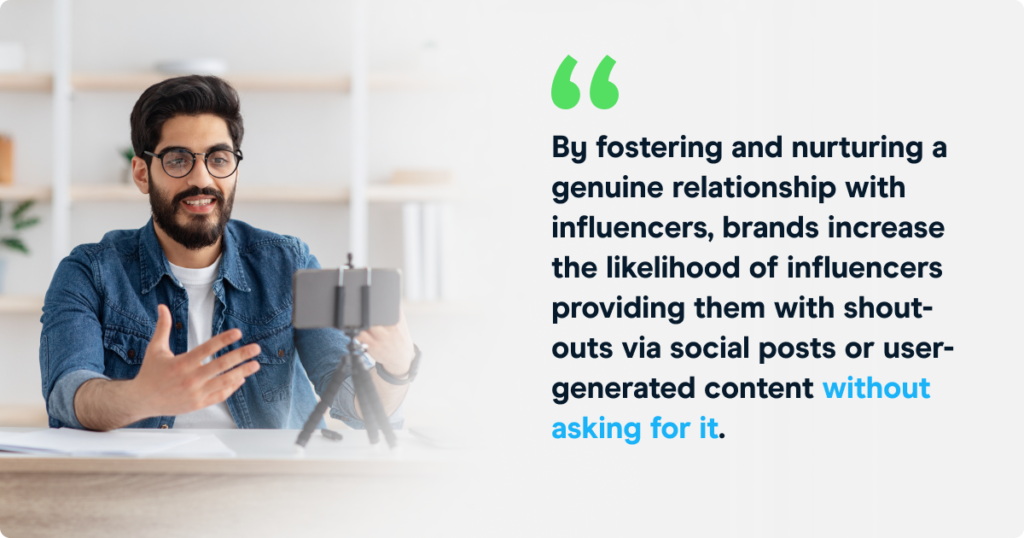From the Dollar Shave Club and their viral YouTube ad to Glossier which took Instagram by storm, countless success stories exist about companies that built their brands through social media and influencer marketing. Influencers on popular social media platforms like Instagram and TikTok are highly effective in driving brand awareness, credibility, and ultimately, sales.
They’re so popular, in fact, that an Influencer Marketing Hub report found that the total influencer marketing industry market is expected to exceed an astonishing $21.1 billion in 2023. That’s nearly a 150% growth from what the industry was worth a mere three years ago in 2020, when it was valued at $9.7 billion.
Typically, influencer marketing campaigns revolve around brands partnering with influencers to post content on their social media profiles that promote their products in exchange for financial compensation (i.e., money, and usually loads of it).
However, with the exploding growth of the influencer marketing industry came new challenges for brands. From choosing the right influencer for your brand to managing the costs of influencer deals, it can be difficult for brands to maximize their time and money spent on influencer marketing. So, what other methods can brands take to diversify their influencer marketing strategy and stay competitive in this ever-growing market?
For brands selling physical products, which happens to be the vast majority of brands today, product seeding is an excellent marketing method to start implementing immediately. If already implementing a product seeding strategy of their own, brands should learn some product seeding best practices so that they can get the most out of their marketing efforts.
What Is Product Seeding?
Product seeding is a popular word-of-mouth marketing strategy where brands send free products to individuals without any obligation or request from the individual themself. This unsolicited act of kindness on behalf of brands is not done solely for the sake of generosity but out of the brand’s self-interest. Brands do this for a variety of reasons, such as garnering word-of-mouth referrals, acquiring valuable product feedback, and encouraging authentic and organic user-generated content.
The concept seems simple enough, but it’s much more nuanced than it looks. As surprising as it may seem, many brands fail with this seemingly straightforward marketing strategy. Oftentimes, brands send out their products to a variety of individuals with nothing to show for it other than a burning hole in their pocket from sending out dozens, if not hundreds, of their products free of charge.
Regardless of how complex or straightforward a marketing strategy may seem, a carefully thought-out plan with managed expectations is always a must.
How Is Product Seeding Relevant to Influencer Marketing?
So, how does product seeding tie into influencer marketing, exactly? Well, most brands today don’t send out their products for free to any old average Joe. Most of the time, brands send their products to influencers in their target market or niche. They do this to get authentic insight into what the top influencers in their niche like, or dislike about their products. They hope that, if done correctly, the top influencers in their niche will love their product and rave about it to their audience in the form of user-generated content such as blog posts, social media posts, or video reviews, resulting in new sales.
Gaining any one of these three would be a jackpot for most brands as it’s authentic user-generated content that the brand can use for content marketing. Brands can then take the new user-generated content and promote it via their website, email campaigns, or social media profiles.
But, if influencers receive free products that they never even asked for in the first place, what can brands realistically expect in return from them? Of course, any brand running a successful product seeding campaign should aim to foster new sales, user-generated content, and product feedback. But, for a product seeding campaign to be deemed successful, brands should at the very least receive some genuine product feedback from the influencer. But, all too often, brands don’t manage to get even that because the influencer has no genuine interest in the product.
So, what can brands do to turn the odds in their favor and run product seeding campaigns that deliver meaningful results? This article will outline a comprehensive guide to product seeding and influencer marketing and how brands can make the most out of their word-of-mouth marketing campaigns.
First Thing’s First…
Product seeding campaigns often fail from the very first step when brands don’t do their due diligence prior to seeding their products.

The first step to a successful product seeding campaign requires investing the time to hone in on the influencers that align with the brand’s identity and are a natural fit for their products. By doing so, brands increase the likelihood of the influencers becoming potential customers who will organically promote their products with their audiences through user-generated content. Their user-generated content professes their newfound appreciation of the brand.
When sourcing influencers, a brand’s primary objective should always be to single out influencers who can actually become their customers. To do this, brands need to look beyond what’s written on paper when accessing influencers’ profiles.
Authenticity is key when it comes to influencer marketing, so brands should seek out influencers who create content around products they actually use themselves. They should dig deep into the influencers’ post history to get a sense of what they stand for, their values, and what products they most commonly promote to their audience.
Brands can work this to their advantage by showcasing their product as a solution that addresses the pain points the influencer has experienced with other similar products from the brand’s competitors. It’s a win-win situation when brands organically convert influencers into potential customers while receiving a shout-out via a social media post or a user-generated video or blog post!
Build and Nurture a Genuine Relationship Prior to Gifting Products
Once they’ve finished rolling up their sleeves and finished singling out the influencers they wish to gift their products to, brands should first establish a connection and build a genuine relationship with the influencers of their choice. Brands should approach their outreach by showing influencers that they’ve done their homework to get to know them to avoid a cold sales pitch. They should cite specific posts from their past and use them to explain why they think their brand and product would be an excellent fit for them.
Even though they may think that everyone loves free stuff, brands should always be courteous and ask their influencers if they wish to receive their product. Once they agree, that’s when they should actually ship their product out. Once the product is sent out, brands should continue building their relationship with influencers by regularly staying in touch.
Seek Feedback
Whether a brand’s product seeding campaign immediately yields user-generated content and a flood of subsequent referral sales or is simply stagnating for some time, brands should always seek feedback. By seeking feedback from the influencers that received their products, brands gain invaluable insights from the perceived experts in their niche. Whether the feedback is positive or negative, brands can use it to improve their products and overall brand strategy. Seeking feedback is a delicate process and should be approached with a strategy in mind.
Brands shouldn’t risk coming off as pushy or obnoxious by immediately bombarding influencers with messages the day they receive the product. Instead, brands should allow several days to pass so that influencers can spend some quality time with their products and get accustomed to them within their daily lives. Once the time has come to seek feedback, brands should take a casual approach by sending a friendly message to let them know they’ve sent them their product.
Don’t Be Afraid to Ask
Though genuine feedback is invaluable, and on its own can deem a product seeding campaign a success, brands should always strive to drive brand awareness with their product seeding campaigns. And nothing drives better brand awareness than genuine, organic, user-generated content.

By fostering and nurturing a genuine relationship with influencers, brands increase the likelihood of influencers providing them with shout-outs via social posts or user-generated content without asking for it. If the feedback was favorable, brands shouldn’t be afraid to ask for something in return. This can be something as simple as a post with their product being used or worn.
Build Partnerships
After receiving favorable feedback, shout-outs via social posts, and user-generated content from their influencers, brands’ next step is to take this opportunity to build a long-lasting partnership. Brands should use this time to take the initiative and offer future collaborations with the influencers for regular ongoing content.
This is the moment when product seeding blossoms into an invaluable influencer partnership where brands offer influencers enticing financial incentives to continue their collaboration.
The Bottom Line
When approached genuinely and executed correctly and strategically, product seeding can be a powerful tool. Brands struggling with paid influencer campaigns need to test new avenues for better brand awareness, such as through product seeding.
Brands need to do their due diligence to find the right influencers that align with their brand’s identity and are a natural fit for their products. By curating a genuine relationship prior to gifting their products, brands increase the likelihood of a successful campaign full of referral sales and genuine user-generated content.
FAQ
How do companies track and measure the success of product seeding campaigns beyond just gathering feedback and user-generated content?
Companies track and measure the success of product seeding campaigns by analyzing sales data, website traffic, social media engagement, and changes in brand awareness or perception, to determine the direct impact of these campaigns on their business goals.
What are the legal and ethical considerations brands must keep in mind when sending products to influencers without a formal agreement?
In product seeding, legal and ethical considerations include transparency about the nature of the relationship with influencers, adhering to advertising standards and regulations regarding endorsements, and ensuring that influencers disclose the receipt of products as part of promotional efforts.
How does product seeding fit into a larger marketing budget, and how can companies allocate resources effectively between product seeding and other marketing strategies?
Product seeding fits into a larger marketing budget as a component of the overall marketing and promotional strategy. Companies allocate resources by assessing the potential ROI of product seeding compared to other marketing tactics, considering both direct and indirect benefits to brand visibility and sales.



